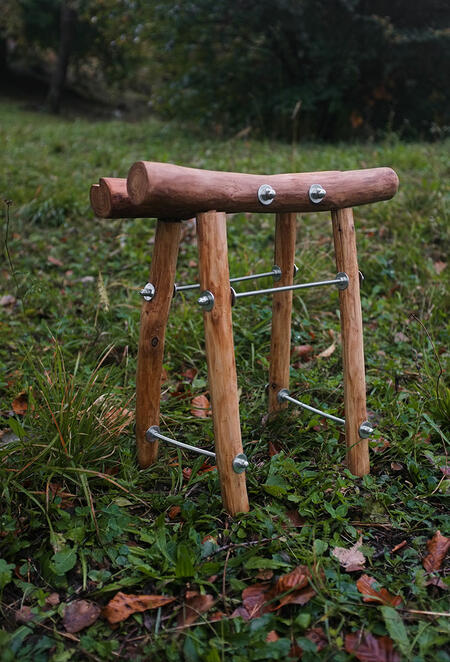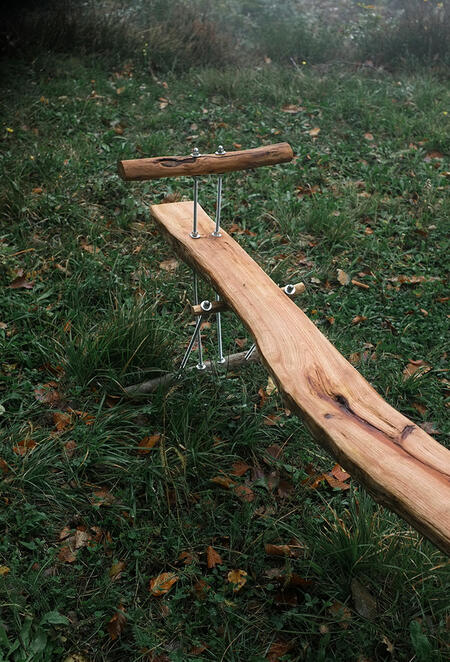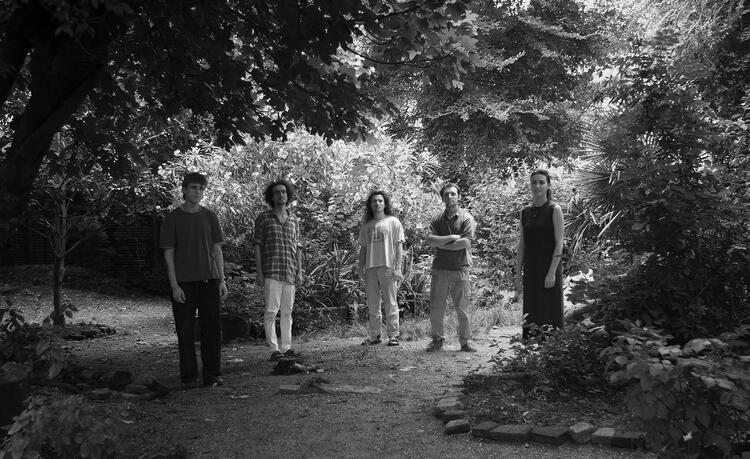
Frantoio e Trabucco, 2023. Panca e sgabello. Legno di castano, giunzioni in ferro zincato. Photo credit: curaa.studio

Outdoor
Venus, Frantoio and Trabucco find a natural setting along the path of the Chilometro della Conoscenza. A stop punctuated by simple, functional architectural elements, a meeting point among the trees where hints of domesticity invite us to rethink our way of living and making design. To inhabit lightly is to use the bare minimum, to assemble cautiously, to lay our creations precisely and respectfully on the ground. Inhabiting a landscape is an archaic form of setting up a field, a draft design to exist in that given place. Minimal assembly, using the forces of compression and traction to join reclaimed natural elements with reduced use of additional components and grey energy, is the basis of these projects. A bench and a stool are made of chestnut trunks and branches juxtaposed in mid-air without touching each other thanks to metal joints. The verticality of the tree, in all its strength, is embodied in a new balance between its branches. The weight of our own body is supported by a slight tension, suspended in the air. A little further on, a well-fountain invites us to take part in a ritual that is collective and intimate at the same time. It is a cue to rethink the way we use water, the way we wash our bodies. A baked aluminum plate placed on a stone looks up to the sky to collect rainwater. The water is drained, passes through stones placed on top of each other in the transparent downpipe, and is then collected in a tank.

Alessandro Baldini, Leo Cogliati, Paolo Failla, Chiara Filippini, Giovanni Perazzi. Photo credit: curaa.studio
curaa studio is a Milan-based collective composed of Alessandro Baldini, Leo Cogliati, Paolo Failla, Chiara Filippini and Giovanni Perazzi. The studio promotes and practices relations-based design, combining architectural thinking and building knowledge: exploring alternative strategies of reuse, recovery and transformation; seeking the most appropriate path that time and place suggest; respecting the value of materials and inviting us to take care of ourselves and the space we inhabit. By creating a transversal dialogue between the city and the territory, the limits and potential̀ of the metropolitan context are investigated in relation to the rural cultural heritage. The design intent stems from silently listening to what the place offers and requires, allowing the communitỳ to translate the spirit of the place into its own language, in a respectful and intimate balance.